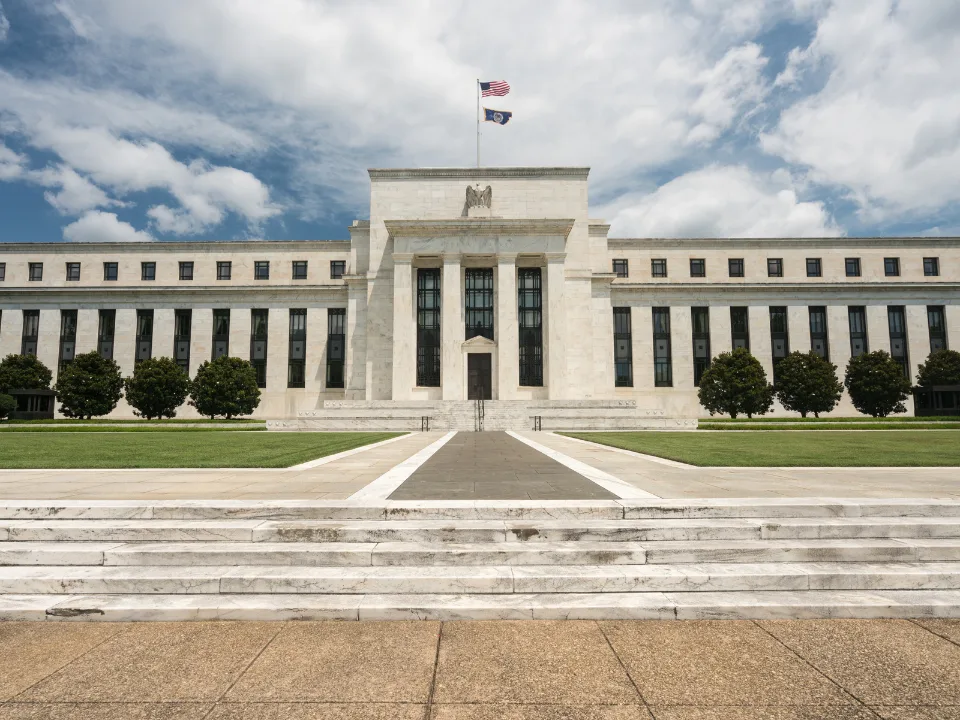- Fed balance sheet runoff may end soon as Powell says reserve levels are nearing the u0022ampleu0022 threshold the central bank is targeting.
- Rate cuts remain on the table, with Powell noting a softening labor market that has rebalanced the risks between inflation and employment.
- Financial markets interpreted the comments as dovish, anticipating further rate reductions amid tighter liquidity and slowing job growth.
A Shift in Strategy?
In a closely watched speech Tuesday, Federal Reserve Chair Jerome Powell suggested that the Fed is nearing the conclusion of its quantitative tightening program — the unwinding of its $6T+ balance sheet — as financial system liquidity begins to tighten, per CNBC.
Speaking at the National Association for Business Economics conference in Philadelphia, Powell also hinted that rate cuts could follow, as slowing job growth and labor force participation bring employment and inflation concerns closer to equilibrium.
“We may approach that point in coming months,” Powell said, referring to when reserves will be deemed “ample,” signaling the runoff could soon end.
Labor Market Data Drives Fed Outlook
The labor market, once a source of inflationary pressure, is now showing signs of strain. According to Powell, new data since July has revealed a “considerable” softening in employment, creating more balance between the Fed’s dual mandate of price stability and maximum employment.
Policymakers must now walk a fine line:
- Cut too quickly and inflation could reaccelerate.
- Cut too slowly and risk “unnecessary losses” in the labor market.
This balancing act has left the Fed cautious but increasingly open to rate reductions.
No Return to Pre-Pandemic Norms
While Powell confirmed that balance sheet runoff may stop soon, he also made clear the Fed won’t return to its pre-COVID balance sheet size of around $4T. The balance sheet swelled during the pandemic due to aggressive bond purchases meant to stabilize financial markets.
“Some signs have begun to emerge that liquidity conditions are gradually tightening,” Powell said, indicating further reductions could begin to hamper economic growth.
He also pushed back against political calls, including from Sen. Ted Cruz, to halt interest payments on bank reserves, saying such a move would “undermine” the Fed’s ability to manage rates.
Looking Ahead
Though Powell did not commit to a timeline for rate cuts, the Fed’s September quarter-point rate reduction and broader economic signals suggest that easing could resume. Markets are already pricing in two more cuts by year-end.
Meanwhile, the Fed’s analysis is being complicated by a government shutdown that has disrupted key economic data releases. Powell acknowledged this uncertainty but said the available indicators show the economy is “on a somewhat firmer trajectory than expected.”
The Consumer Price Index report, a key inflation gauge, is due next week and will likely influence the Fed’s next steps.
Why It Matters
For investors, businesses, and consumers, Powell’s remarks confirm that the Fed is nearing a policy pivot. With balance sheet tightening nearly complete and employment concerns rising, the central bank appears more willing to begin cutting rates, potentially sooner than previously expected.
The message: the tightening phase is nearly over. The era of easing may be next.
Get Smarter about what matters in CRE
Stay ahead of trends in commercial real estate with CRE Daily – the free newsletter delivering everything you need to start your day in just 5-minutes
















